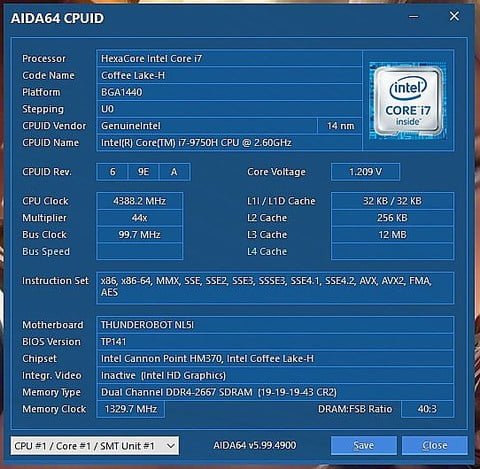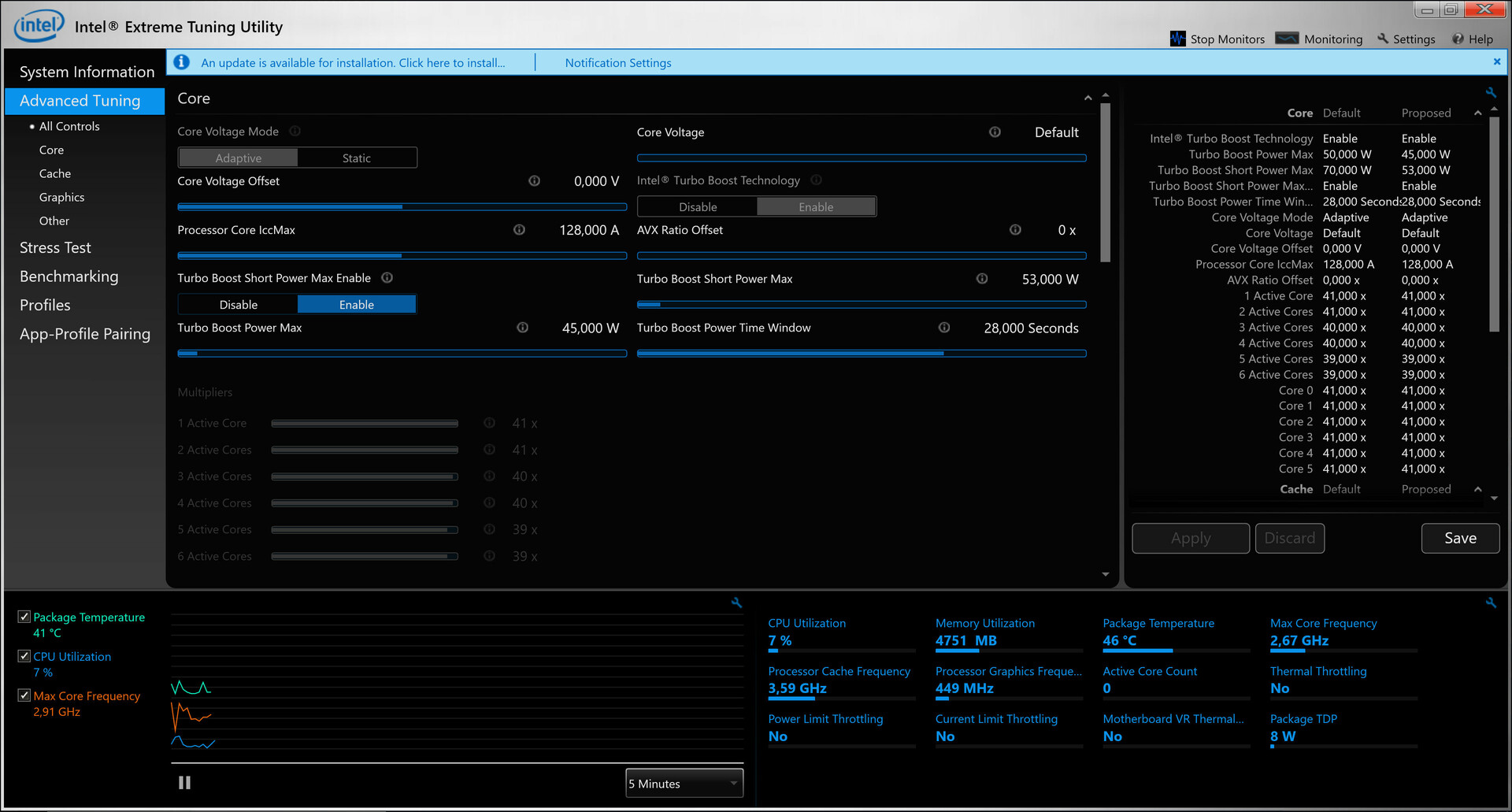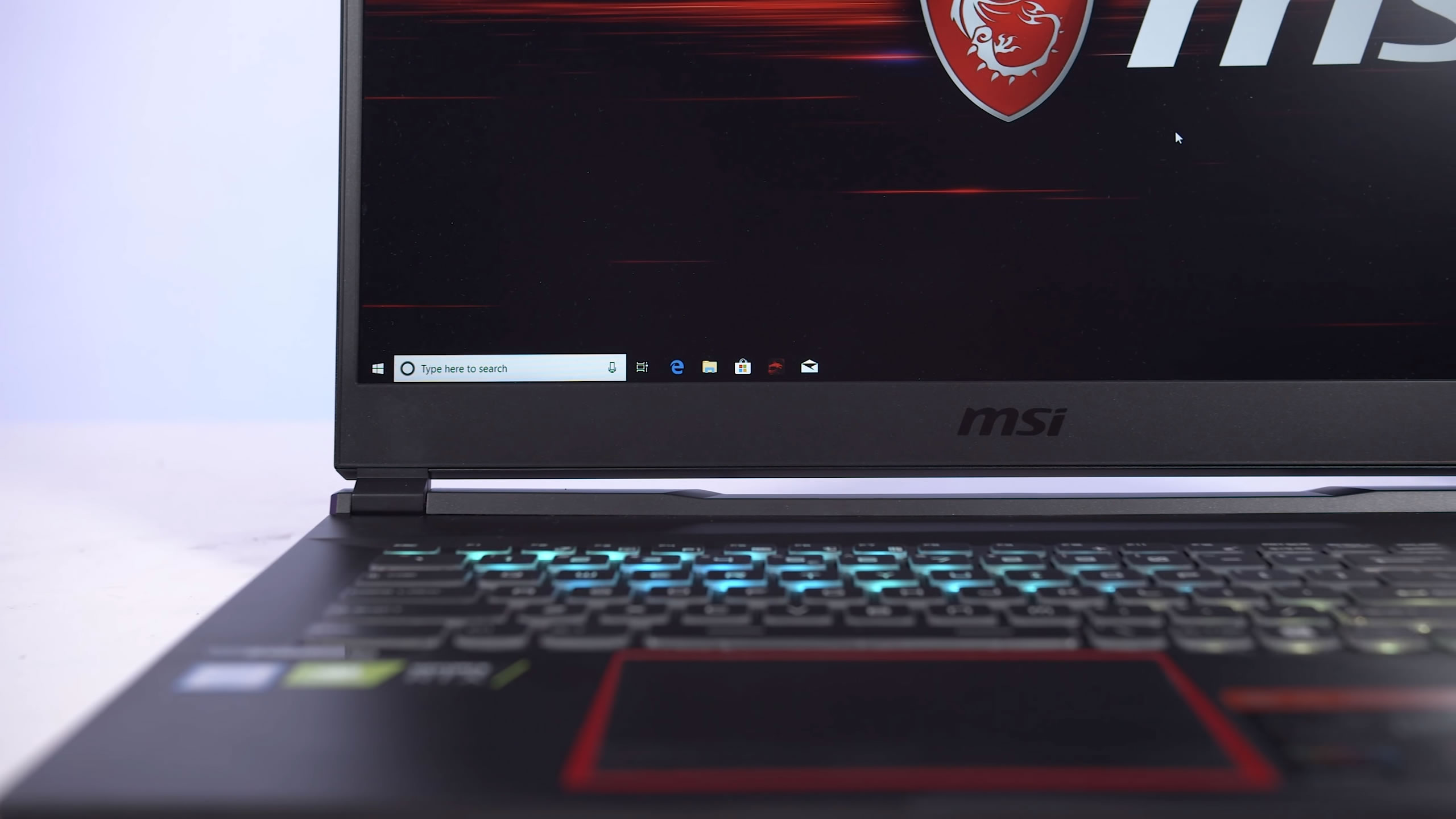

The most common result we achieve is for the 'before' and 'after' benchmark scores to be within a few points of each other when undervolting.


It is our experience that if you see a noticeable difference in benchmark score within Intel XTU, then your system is throttling in a comparatively short period. However, we do need to point out that just like the stress tests, this benchmark isn’t very comprehensive compared to a third-party alternative like a Cinebench R15 loop to assess performance over time to see any temperature and power draw improvements from undervolting. It is worth running the benchmark prior to tweaking any settings since it can be used as a reference point to assess any gains we achieve. The two programs modify many of the same registers and it can get a bit messy. If you already use ThrottleStop and are wanting to give Intel XTU a go, then you need to reset any changes back to default, uninstall ThrottleStop, and then reboot your computer before installing Intel XTU. Intel XTU functions similarly to the third-party ThrottleStop utility, a fan favorite in the mobile computing community.

So to add to Intel’s description regarding overclocking, we’d say that Intel XTU is a tool that lets us adjust settings that can lower the temperatures that our system hits under load, potentially cause the fans to run quieter, and maybe even extend battery life. Fortunately, some of the settings available to us - like the core voltage - aren’t just used for overclocking, they can also be used to reduce the thermal load on our systems. However, most of us own laptops that aren’t capable of overclocking, both because of the change Intel processors underwent when moving from a traditional FSB to a BCLK setup several years ago, and because our cooling systems aren’t able to handle that thermal output. Many enthusiasts prefer to handle this via BIOS, but Intel XTU provides options for modifying metrics such as core voltage, clock speed multiplier (on supported CPUs), and turbo boost power limits (if the manufacturer has enabled this option). Intel Extreme Tuning Utility (XTU) is a Windows-based program that Intel promotes as a way to overclock and performance-tune your system.


 0 kommentar(er)
0 kommentar(er)
